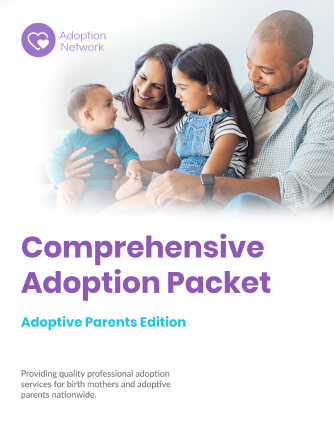
What Does Adoption Mean to an Infant-3 Year Old?
An infant has no concept of adoption. Their world consists mainly of sleeping and eating. As they grow, they interact more and more with those caring for them and their environment. They know if their needs are being met and will convey unhappiness or discomfort by wiggling, whining or crying.
Just because they don’t understand adoption, does not mean that they should not hear the word or their story. The more you use the words, by the time your child understands what you are saying, your tone and body language will be more relaxed and you should feel at ease talking about adoption.
By the time a child is 2 years old, they are developing into a small human with their own thoughts, desires and opinions and they are aware of what is happening around them.
They should have heard the word adoption from you by now, and been told initial pieces of their story, such as where they were born and when they came to live with you and into your home. You can use a map and photographs to show them the place of their birth, the place of your birth and where you live. They will understand –
“You were born in Houston, Texas.”
“Mommy was born in Boston, Massachusetts.”
“We got married in Hartford, Connecticut.”
“We live in New York City.”
“Daddy flew in a plane to meet you in Houston, Texas.”
“We stayed in Houston, Texas until we could bring you home.”
“We flew in a plane all the way to New York City.”
“Everyone was waiting to meet you”
This does not mean they understand the implication of adoption. In fact, many children hear and interpret that they were adopted, as “I am a doctor” (a word they know). Even if not using the right words, your child knows they have a family. They have a parent or parents who love them.
Around this age, toddlers are noticing others around them. They see pregnant women. They may ask “Why is she so big?” or “What is in her belly?” This is an opportunity to talk about where babies come from and how they became a member of a family.
“She has a baby in there.”
“All babies come from ladies bellies.”
“You came from a lady’s belly.”
“Some babies go home with those ladies who become their mommies and some go home with other ladies or men who become their mommies and daddies.”
“After you were born, you came to live with me.”
For some, a sibling is on the way (through birth or adoption). If you are pregnant, or using a surrogate with whom you are in personal contact, you can have the same conversation. If you are adopting, you can have the same conversation, adding details about how they came home to live with you.
“When you were born, the decision was made for you to come and live with me.”
“I was so excited; I got to be your mommy/daddy when you were born.”
“We are waiting to see, but we hope she will decide we can raise and love the baby. She won’t decide until the baby is born.”
Children at this age soak up words like sponges. Choose your words carefully (as they will most likely be repeated by your child). Be prepared that if your child repeats what they hear, that you may be asked questions. Your child’s adoption history and story belong to them. Do not share personal information with anyone, including extended family. Your child should hear everything from you (not from someone else) and, as they grow, have the choice with whom to share that information.
By the age of 3 or 4, children who do not look like their parents, or are living in a household with one parent or same-sex parents, are already being asked (or overhear you being asked) questions by peers or adults. Children listen to how you respond. They also need your assistance in what to say when they are asked such questions.
From Peers:
“Where is your REAL mommy?” “She’s over there, see?”
“How come you have 2 daddies and no mommy?” “Cause that’s my family and they love me.”
From Adults:
“What do you know about his real mother?” “I believe you mean his birth mother. What I know is personal information and not shared with others.”
“How much did you have to pay for her?” “There were legal and other fees associated with the adoption. Everything is regulated. She is priceless.”
How you respond sets the tone for your child. Your tone, body language and words will be imitated by your child as they grow. As you teach them how to respond, you are also encouraging them to come to you to discuss adoption as they have questions or others ask them questions. You will teach them an adoption vocabulary, at the same time monitoring their feelings about adoption and their self image. These early talks are the start of discussions throughout their lifetime.
Available 24/7 to Answer Your Adoption Questions


Search Adoption Network
Speak with a Specialist 1-800-367-2367
